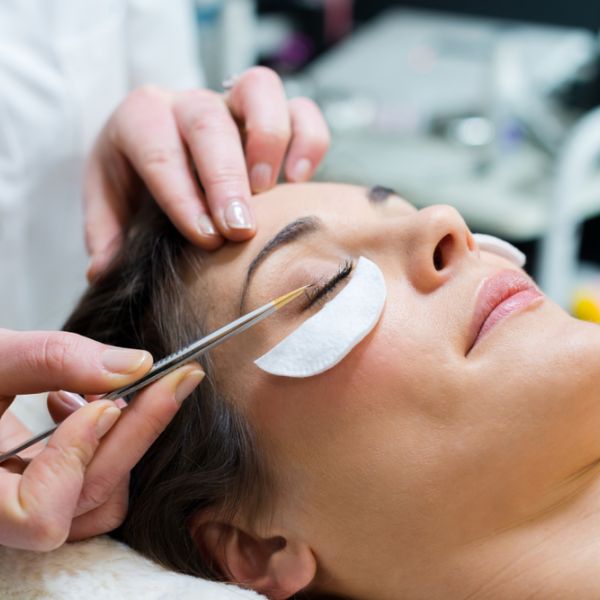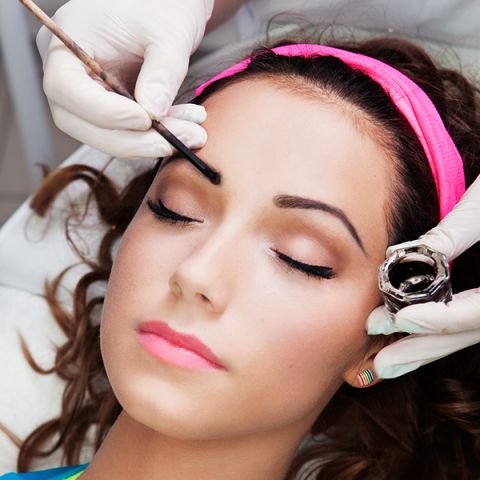Patch Testing, where a treatment requires an obligatory patch test, resist being pressurised by the client to proceed without a test. Be prepared to lose business if they won’t have a test; it could save you serious heartache if a treatment causes a serious reaction. It is a condition of your BABTAC insurance that you must perform a patch test on the first occasion that you see a client in preparation for all treatments that require testing.
However, you also need to follow your training and manufacturers’ guidelines; for example, if the client hasn’t been for 12 months or more, there are changes to their health, such as new medical conditions or medication, or the product ingredients have changed, you should do another patch test.
Why are patch tests important?
Clients have a right to make a complaint or claim at any stage, there will although be a full investigation into whether you as the therapist, have been negligent or not and this can incur costs. A claim would only be upheld if you as the therapist have been negligent in your actions. It is vital that you avoid the patch test trap by conducting a patch test and making a record of this on your client’s notes, you must include the date of the patch test, product used and the client’s comments when returning for the treatment. This enables insurers to defend you in any claim situation and provide proof that you have not been negligent. This also benefits other therapists treating your client, to ensure that the correct products are used.
Carry out the patch test as outlined below:
- A skin patch test must be completed, where recommended for each new treatment carried out on your client; it should be carried out at minimum 24 hours before treating the client for the first time or 48 hours before for clients with diabetes or other special circumstances.
- Follow the manufacturers’ and your training guidelines. The point of the patch test is to see if the client is going to have an allergic reaction to the product or not. You cannot insure against reactions to the patch test, as there has been no negligence on the part of the therapist as you are working within the guidelines of your role as a therapist and within industry standards.
- We request that testing must re-occur if there has been a change in the client’s medical history, a change in the treatment preparation (e.g. a new formula or different product), any hormonal changes such as pregnancy or menopause or if there has been a 12month interval since the last treatment. Ensure to review your client’s medical history on every visit.
- We recommend that you always follow the specific manufacturer’s guidelines written on the product packaging, with regards to preparation, application and patch testing. In the case that the packaging recommends patch testing more frequently than the guidelines above, you will need to follow their instructions as it is likely they have encountered a specific problem during the product testing.
- Get your client to sign a consultation form/record card to confirm that they have received a patch test and are happy to continue with treatment. Note: if your client has any allergic reaction to the patch test, you must not perform the treatment as any resulting claim will not be covered. Again, you must include the date of the patch test, the product used and the client’s comments regarding the patch test when returning for the treatment.
- Ensure the client is given relevant aftercare instructions before and after the treatment, aftercare advise is always given in writing and make a note of this on the client’s consultation card along with their signature to confirm this.
The list of treatments that currently require a patch test are:
- Eyelash/Eyebrow tinting
- Some peel treatments, depending on manufacturer
- Lash extensions
- Semi-permanent make-up
- Laser and IPL
- Eyelash perming
- Spray tanning
- Hair colouring products
Contra-indications:
If your client has a contra-indication, such as an eye infection, regardless of the results of any patch test, whether or not you carry out the treatment would depend on your training.
As the professional therapist, you are the one who would be viewed in law to know what is best for your client. If you chose to treat the client, going against your training, and the treatment made their condition worse, you could be viewed as being negligent in your professional capacity. Your client may then be able to successfully claim against you.
Falling into the Patch test trap:
Unfortunately, at Balens we come across a number of therapists who inadvertently fall into the patch test trap. For example, Therapist B was conducting an eyelash tint for a client. She discussed a patch test with the client, but the client wanted to go ahead without the test as she had an eyelash extension booked at another salon directly after the tinting.
Unfortunately, the client didn’t keep still during the treatment and a small amount of product went into the client’s eye, which resulted in a stinging sensation.
Although Therapist B washed out the eye, noting that it was completely clear when the client left, and offered her a discounted rate for the treatment as a gesture of good will, her client subsequently claimed that she had sought medical assistance. The client was advised she had suffered a chemical burn to the eye and was suffering pain and discomfort three weeks later as a result of the tinting.
Therapist B believes the claim was a deliberate plan to gain money, being directed at her rather than the lash extension therapist at another salon. However, because Therapist B had not carried out a patch test, insurers refused the claim.
Although Balens offered advice and support, Therapist B had to manage the time, stress and financial burden of the resultant claim, which came to approximately £5,000, on her own.




